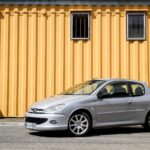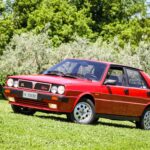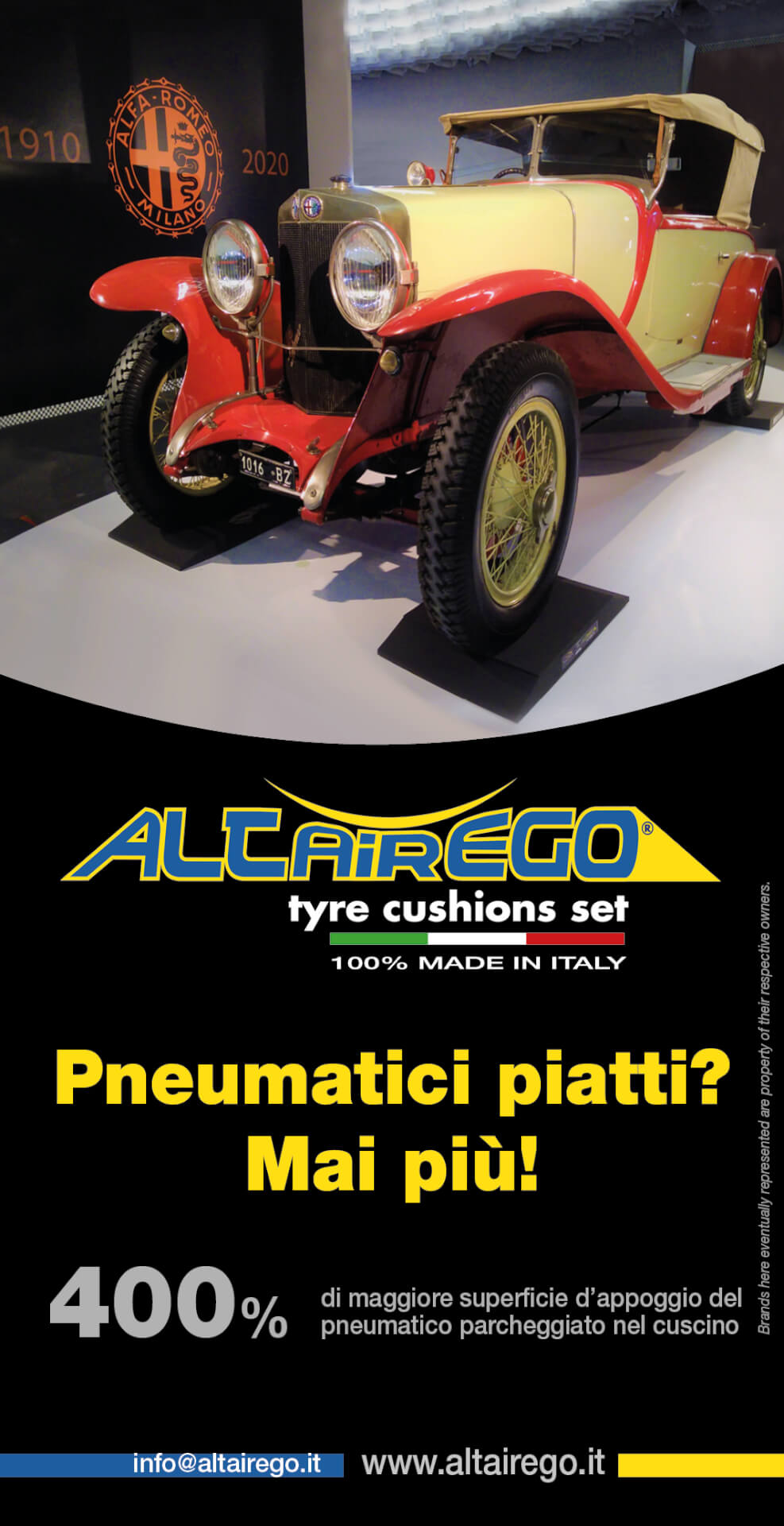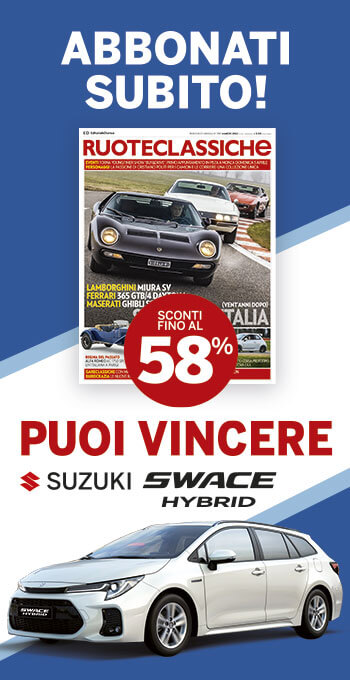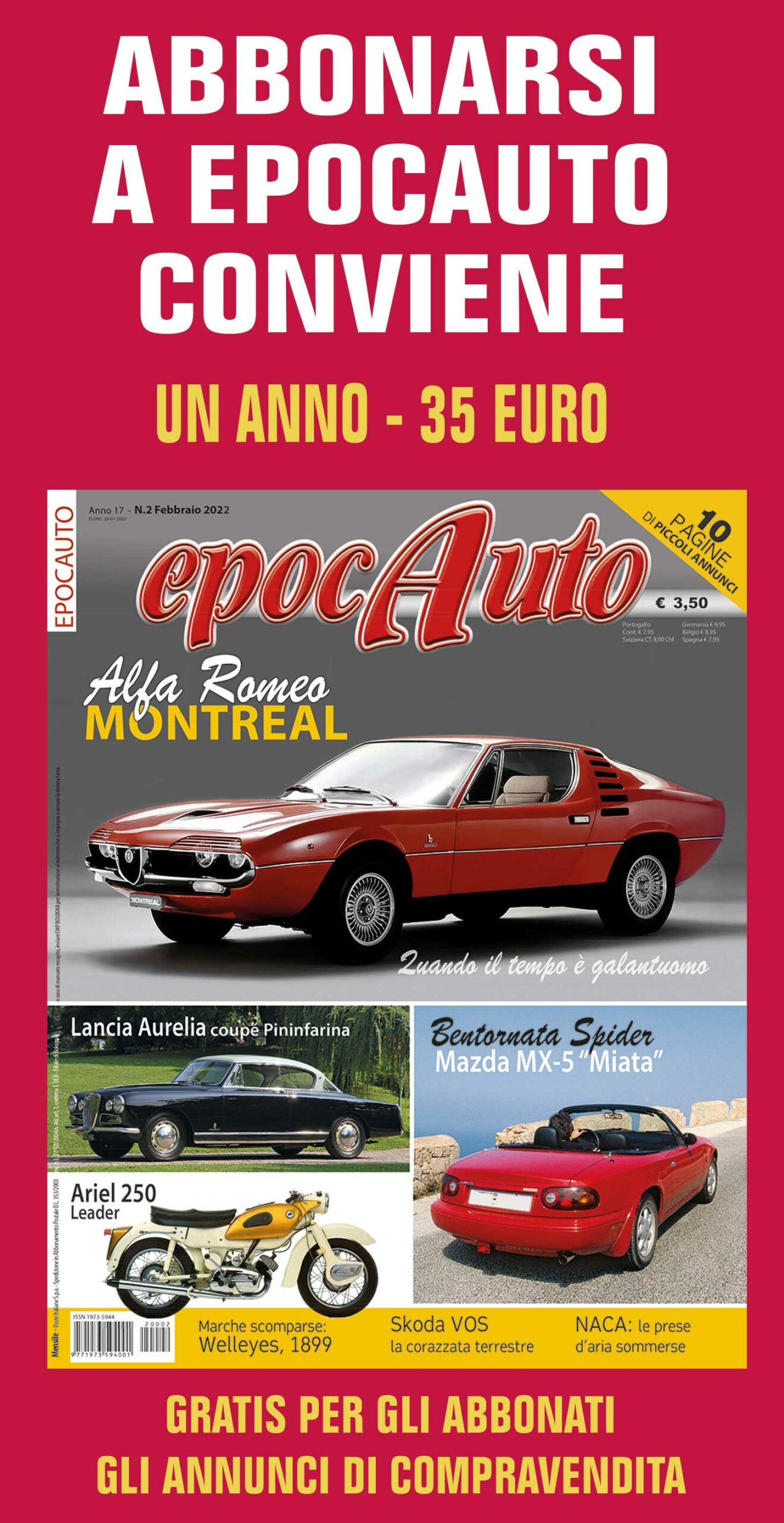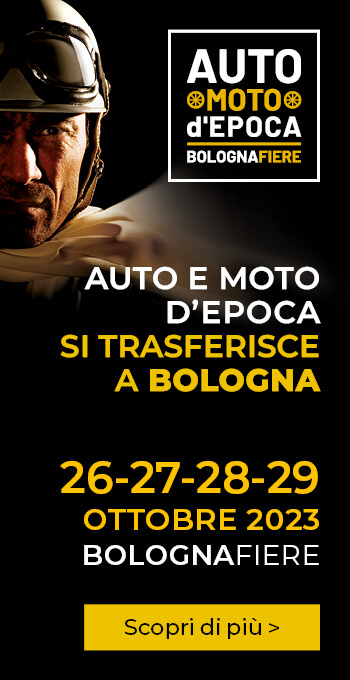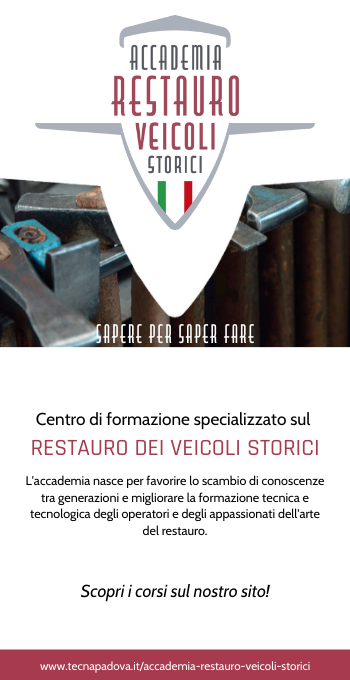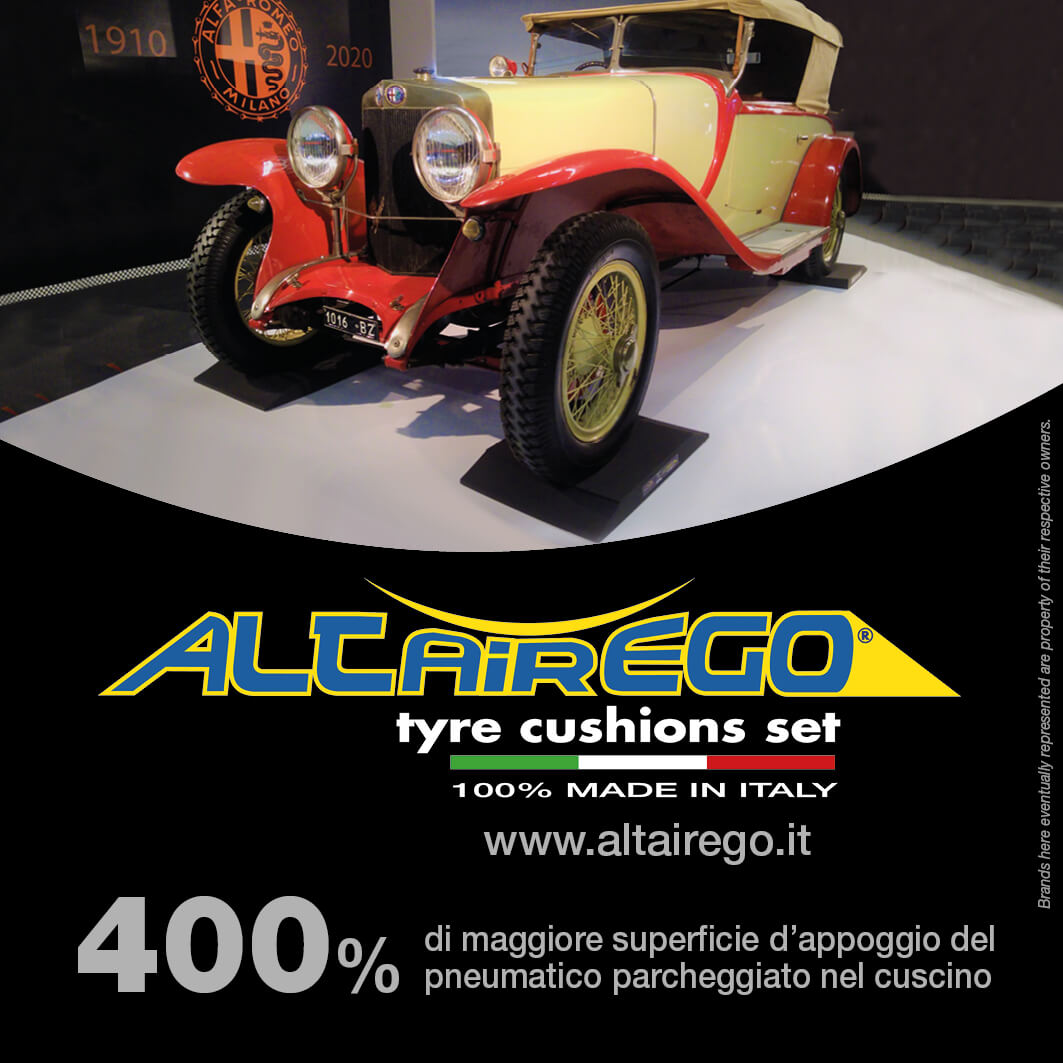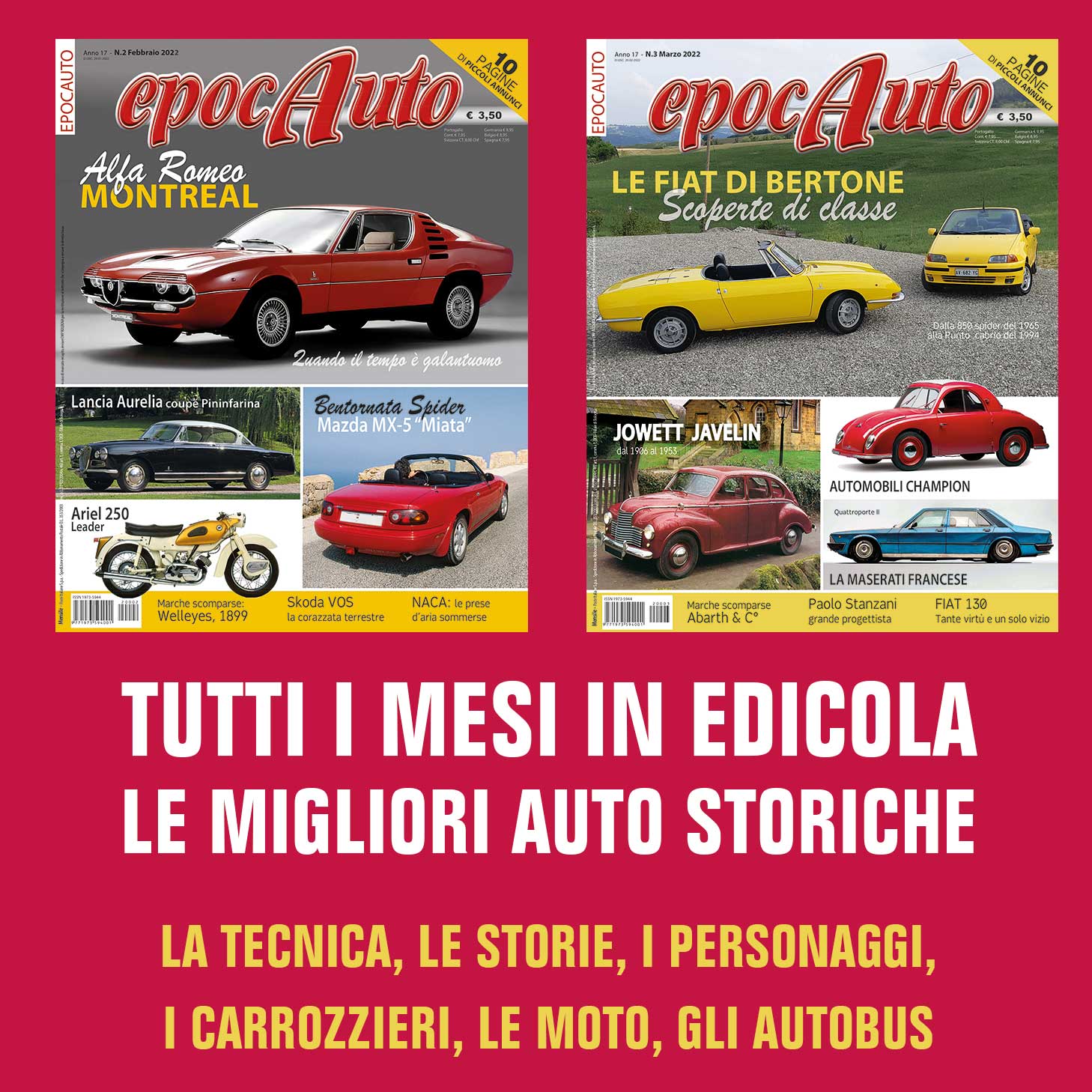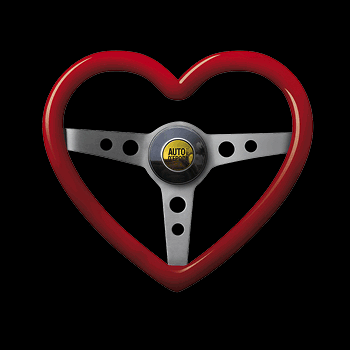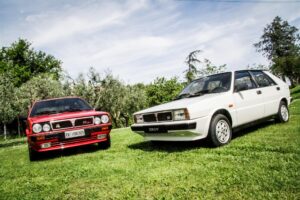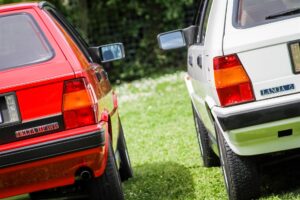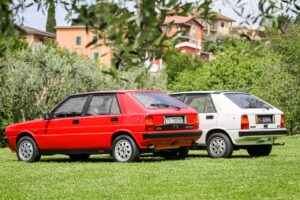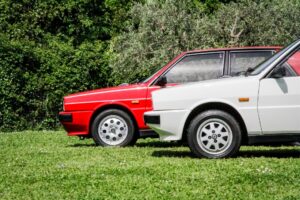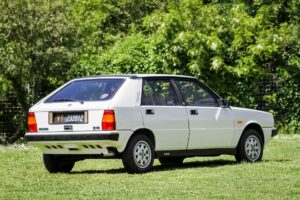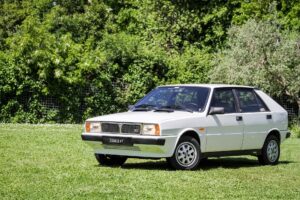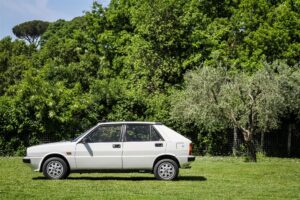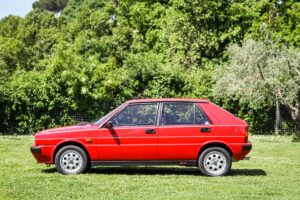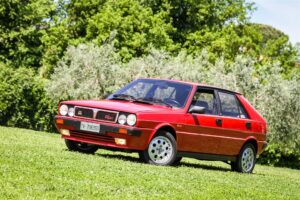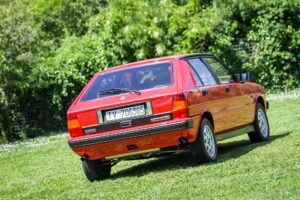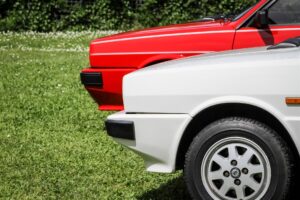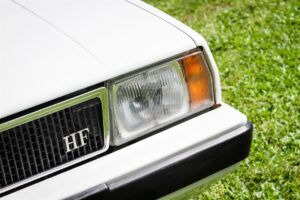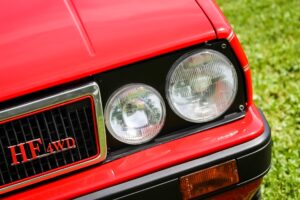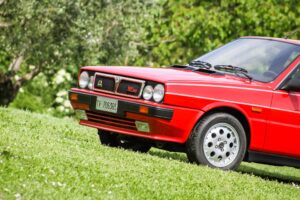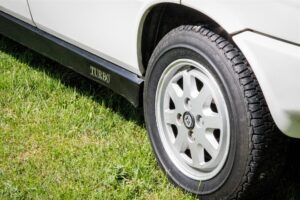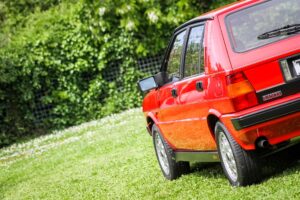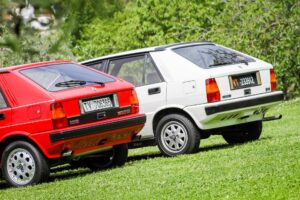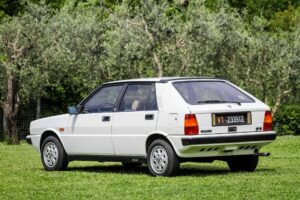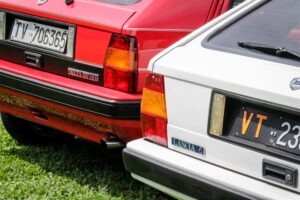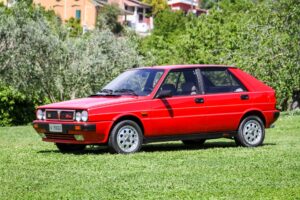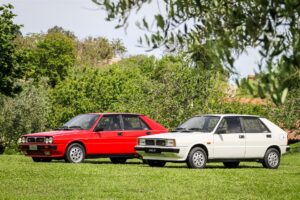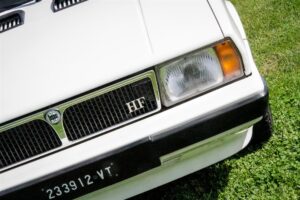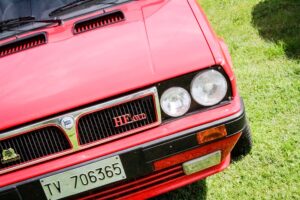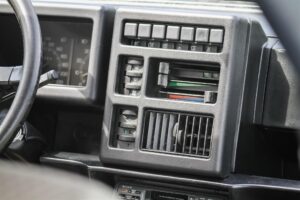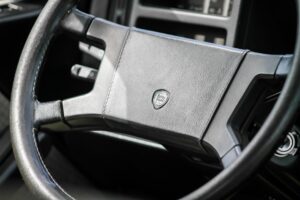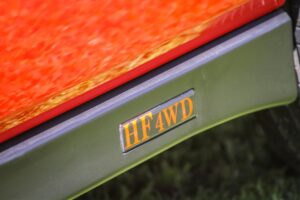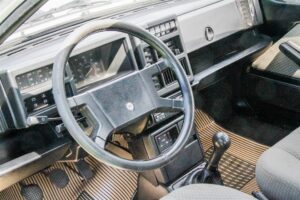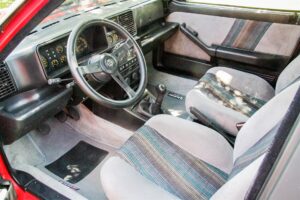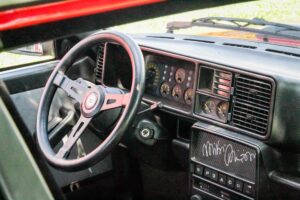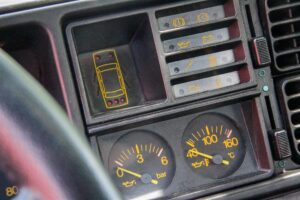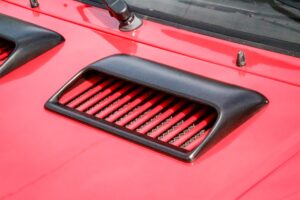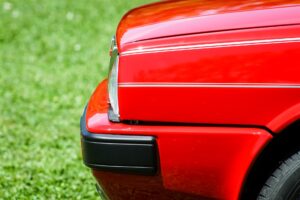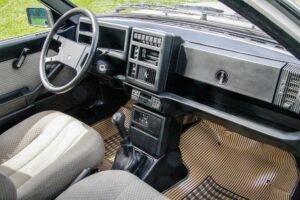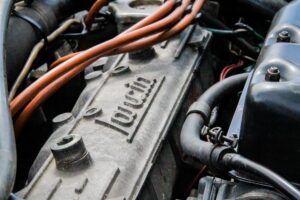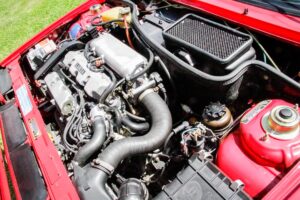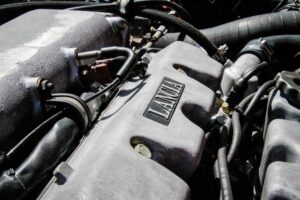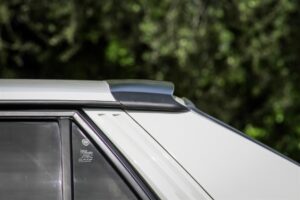Magazine Agorauto
Lancia Delta HF Turbo and 4WD, the genesis of a myth
Author: Michele Di Mauro · Credits Ph: Michele Di Mauro
5 April 2022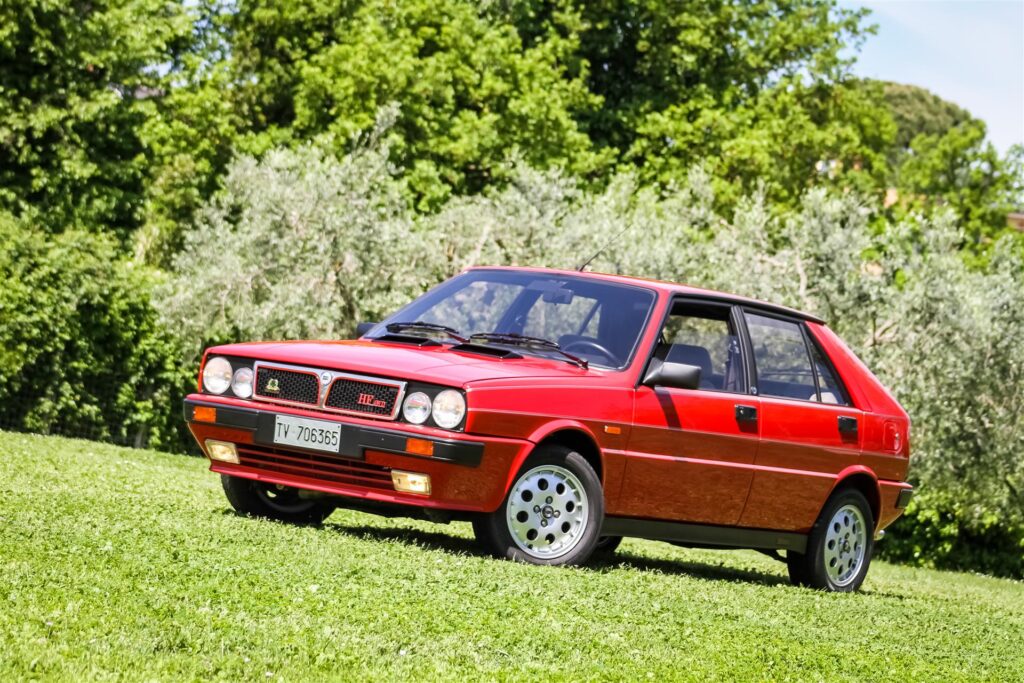
The Lancia Delta is a motor sports icon, as well as one of the best-loved and most talked about youngtimers. Let’s take a look back and rediscover the different versions which unconsciously gave birth to a great motor sports story.
Lancia Delta, a name which brings a lump to the throat of anyone with even a minimum of knowledge of the history of Rally racing. The saga of Turin’s four-wheel-drive sports cars is craved indelibly into the annals of motoring, notching up an as yet unequalled string of victories: no less than six consecutive world Rally Championships, between 1987 and 1992, and four driver’s titles: two with Miki Biasion (1988 and 1989) and two with Juha Kankkunen (1987 and 1991). This inevitably means that day, the Delta HF Integrale series are the most sought-after, collected, appreciated and obviously, talked-about Lancia youngtimers.
A beautiful story started exactly 10 years earlier. The Lancia Delta made its debut in 1979, and was the model that had the thankless task of filling the gap left in the C segment by the Fulvia, which had by then been out of production for more than three years. It was a task that it would perform very well, becoming the second bestselling model in the history of the brand, selling 525,231 units of the first series alone.
Designed by Giorgetto Giugiaro, the new compact Lancia immediately established itself as a premium model in the segment, causing havoc amongst the competition with its taut, squarish lines and balanced, modern proportions, both inside and out. It was a mix of elegance and innovative solutions which at first left the public perplexed, but which earned it the prestigious title of Car of the Year 1980, a ultimate “first” for the Turin brand. This, together with its sporting successes, allowed it to remain in production until 1993 and on the catalogue, with a number of special series, until 1995. The plusses that the Delta brought with it included bumpers in polyester resin reinforced with glass fibre, and a wealth of fittings including heated rear window with windscreen wiper, mirrors which were adjustable from the inside, external finishes in anodised aluminium and stainless steel, modern corrosion proofing treatment and painting systems, iodine headlights and much more.
This new Turin beauty debuted with two engine sizes, 1.3 and 1.5 litres, which were joined by two new, exuberant versions during the first restyling in 1982: the 1.6 GT and the HF Turbo. And it is on the last version that we have chosen to focus our attention. That’s because this is where we find the first real seed of what would become the racing Delta dynasty. The name that they chose is very evocative: the HF acronym immediately brings to mind the Rally racing companies of the unbeatable Fulvia and Stratos, while the turbocharged engines were a must at the time, also due to the popularity endowed by the new Formula 1 rules. The GT and HF use the same engine, the old 1585 cc, four-cylinder Lampredi engine, either aspirated with a carburettor and Marelli Digiplex electronic ignition producing 105 horsepower or with a turbo, again with carburettors, producing 130 horsepower.
The first all-wheel drive prototype was developed at the same time, to be presented the same year at the Turin motor show. Developed using the mechanicals and chassis of the base model, it was fitted with the HF engine boosted to 166 hp, while the transmission featured a transfer case differential with longitudinal drive for transmission to the rear wheels, controlled via a self-locking differential. These were the years in which Lancia rallied using the formidable 037, capable of snatching the world title from the new Audi Quattro, but in which it was clear that the future of racing would be entirely the preserve of four-wheel-drive cars. These were also the years during which the monstrous Delta S4 was developed, which shared little more than its name with the Delta and which would establish itself as one of the few unbeatable racing cars of the famous, unforgettable Group B. Fate interceded with a series of fatal accidents, in essence because of the engine outputs reached which were considered unmanageable at the time, which in 1986 led to the shutdown of the category, and with it, frightening prototypes such as the Peugeot 205 Turbo 16, the aforementioned Audi Quattro, the Ford RS 200, the Austin Metro 6R4 and, finally, the Delta S4.
The International Automobile Federation decided on new regulations for vehicles with characteristics closer to those of production cars. This gave rise to Group A, to which, almost without warning, all of the manufacturers were required to adapt, and at speed. Lancia abandoned its development of the ECV prototype, the progenitor of what should have become the Delta S4 Evoluzione, and focused their efforts on the racing adaptation of a production car.
May 1986 saw the debut of the Delta HF 4WD, a model which was a natural evolution of the HF Turbo, although it marked a step forward in comparison, both thanks to the advent of all-wheel drive, another first for a production Lancia, and for the fact that it was fitted with a two-litre engine the derived from the Thema. The front-wheel drive HF Turbo 1.6 remained on the catalogue, however. The new HF 4WD featured permanent four-wheel drive with a free front differential and epicyclic centre differential, which distributed 56% of the drive torque to the front axle and 44% to the rear axle. In the centre, a transfer case centre differential with a Ferguson viscous coupling and a Torsen differential at the rear. The engine was a two-litre unit with a balance countershaft and a Garrett turbocharger, capable of 165 horsepower at 5500 RPM and 29 kgm of torque.
Here, we find the second, crucial seed in the racing Delta family tree. It is thanks to this car that subsequent evolutions, named Integrale, would come to life, and it is this that the unparalleled cycle of Lancia rally racing victories are due.
Often overshadowed by its more famous, “swollen” heirs, the Delta HF Turbo and HF 4WD are cars to which every devotee owes a lot. The progenitor models of a glorious lineage (with superchargers and four-wheel drive), they laid the foundations for one of the most beautiful and exciting eras of motor sports ever, particularly for anyone who loves Italy.
We also chose to photograph these two examples in order to realise the degree to which, and how such a iconic and stylistically interesting model has evolved.
Whereas the Turbo (This example dates from 1984 and is for sale on Agorauto) still reveals the sharp, dry lines of Giugiaro’s first official sketches, the 4WD (a 1987 model recently sold by Miki Biasion) allows us to discover more rounded, gritty shapes, already aligning with the stylistic features of the early 1990s. This is a formal language that we will find on the subsequent Integrale, together with the “signature” double headlights, which will also be inherited from the last two-wheel drive HF.
The engine compartment and interior betray the 3 years which separate the two cars in the same way, although in essence the gap seems to be much wider: the interior of the Turbo appears more updated, essentially due to the dashboard, which is more “enclosed” and characterised by big buttons, sliders and cogs which still smell of the 1970s; that of the 4WD is more airy and colourful, with its yellow instrumentation and the beautiful three-spoked sports steering wheel that would remain on both the subsequent Integrale and Integrale 16v. Both come with signed upholstery, as befits a real Lancia: Zegna on the first, Missoni on the second.
If we take a peek under the bonnet: the mechanical layout is similar, with the two four-cylinder engines arranged transversely. Looking at the Turbo, a feeling of déjà vu brings us back to the engine compartment of a Beta, with its engine in full view and the Lancia lettering in italics that has remained unchanged since the 1960s. You get a different feeling when you look at the 4WD, with the two-litre Thema properly augmented with an eye-catching turbocharger. It is the same unit which on later road versions will deliver 185 horsepower in the 8-valve version and over 200 in the 16-valve version, effectively consigning this model to history. But the history and successes would not have been possible if someone had not first taken a risk, trying to raise the bar a little higher. Because that’s what the history of the Delta is all about: a tale of engineers and technicians who, at a time when the Italian automotive industry still gave them the chance, tried to raise the bar higher and higher, and, step-by-step, reaching the roof of the world. Today, it is up to us to celebrate this story and tell it to future generations. Maybe behind the wheel of a beautiful Delta.
Tags: 4WD, Delta, HF, Integrale, Lancia, youngtimer

